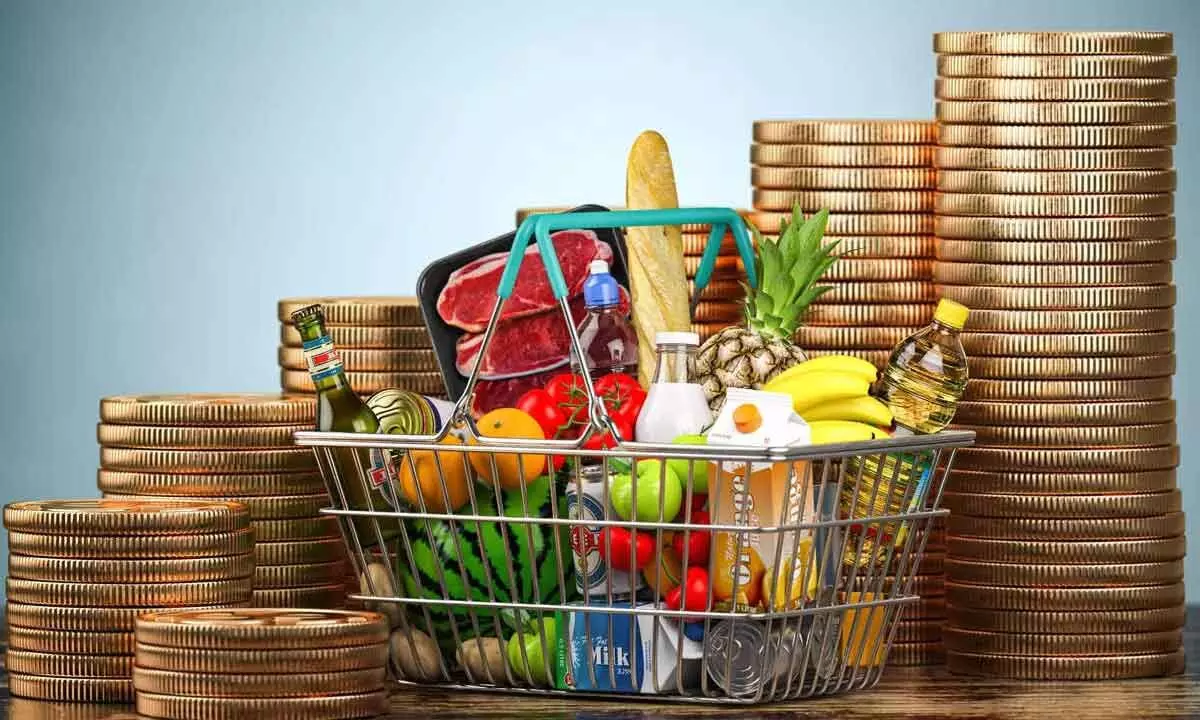As pricey vegetables lift inflation, hope revolves around a good monsoon
image for illustrative purpose

Even though pricey vegetables might have lifted CPI-based inflation to 5.08 per cent in June from 4.8 per cent a month ago, the arrival of good monsoon in July comes with a high hope that inflation will be tamed in the days to come. This is notwithstanding a supportive base effect from last year, following which food inflation surged to 9.4 per cent due to pricier vegetables, cereals, milk and fruits. Vegetables inflation alone has remained in double-digits for eight months now and continues to be a major worry. Although June rains were deficient, the only solace lies in July and August rains, as it is what matters for kharif. Crisil expects progress on monsoons and sowing to improve agricultural output and cool off food inflation in the coming months. Analysts expect decline in food inflation in the coming months to drag down headline inflation to an average of 4.5 per cent. This is despite the fact that no rate cut is expected in the forthcoming policy as RBI pursues a four per cent durable inflation target.
The uptick in the headline CPI inflation was largely led by a rebound in the food and beverages inflation to above eight per cent, amid a sharp sequential increase in vegetable prices. Barring food and beverages, inflation across all the other sub-groups remained below the four per cent mark in June. The core-CPI inched up marginally to 3.35 per cent in June from 3.28 per cent in May. This was the seventh consecutive print of a sub-4 per cent core inflation print, benefitting partly from the protracted impact of last year's softening in commodity prices. Kharif crops were sown on 38.7 million hectares by July 8, accounting for 34 per cent of the total area covered in the 2023 season. While this entails a healthy YoY expansion of 14.1 per cent, it was largely driven by a low base as sowing had only gathered momentum towards the latter part of the season in 2023. Compared to the corresponding period of 2022, cumulative kharif sowing was 2.1 per cent lower up to July 8, amid large lags in crops such as rice and pulses.
With nearly 50 per cent of kharif sowing usually taking place in July, adequate rainfall across regions will be critical over the next few weeks to accelerate the pace of sowing. While IMD expects above normal rainfall in July, Icra remains watchful of the episodes of heavy rainfall and flooding across some states that could harm crops that are already sown. Meanwhile, many analysts estimate the headline CPI inflation to soften to 2.5-3.0 per cent in July entirely on account of the favourable base effect, which will partly absorb the impact of the sequential surge in prices of vegetables. Further, an intensive rainfall can further push up perishable prices, which imbues caution into the near-term outlook.

